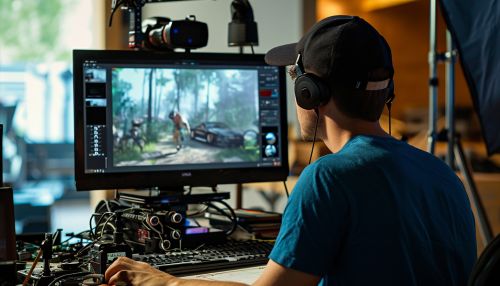Live-Action Storyboards
Introduction
Live-action storyboards are a crucial part of the film production process. They are a series of illustrations or images displayed in sequence for the purpose of pre-visualizing a motion picture, animation, motion graphic, or interactive media sequence. These storyboards are used in filmmaking, television production, and video game development to map out scenes, camera angles, and character movements before the actual filming or animation process begins.


History
The concept of storyboarding originated in the animation industry, particularly at Walt Disney Studios, during the early 1930s. The practice was later adopted by live-action film production during the early 1940s. Storyboarding became an essential part of the pre-production process, allowing directors, cinematographers, and production designers to visualize the scenes and find potential problems before they occur.
Purpose and Benefits
Live-action storyboards serve multiple purposes in the filmmaking process. They provide a visual representation of the script, helping the director and the crew to better understand the narrative flow of the film. They also allow the director to experiment with different staging and art direction options, and to plan the cinematography of the film, including the placement of the camera, the selection of the lens, and the movement of the characters and objects within each shot.
Storyboarding can also help in estimating the cost of the production, as it gives a clear idea of the number of scenes to be shot, the locations required, and the props and costumes needed. It can also assist in scheduling the shooting, as it provides a rough idea of the sequence of scenes and the time required for each.
Process
The process of creating a live-action storyboard begins with the reading of the script by the storyboard artist. The artist then creates a series of drawings to represent each shot, using their knowledge of cinematography and visual storytelling. These drawings are usually accompanied by notes describing the action, the dialogue, the camera movement, and any special effects.
The storyboard is then reviewed by the director and other key members of the production team. Changes may be made based on their feedback, and the storyboard may go through several revisions before it is finalized.
Once the storyboard is approved, it is used as a guide during the filming. However, it is not uncommon for changes to be made on set, as the reality of filming may present unforeseen challenges or opportunities.
Techniques and Styles
There are various techniques and styles used in live-action storyboarding. Some storyboards are very detailed, almost like a comic book, with intricate drawings and extensive notes. Others are more simplistic, using stick figures and basic shapes to represent the characters and the environment.
The style of the storyboard often depends on the nature of the film and the preference of the director. For example, a high-budget action film may require a detailed storyboard with complex action sequences, while a low-budget independent film may be served just as well by a simpler storyboard.
Role of the Storyboard Artist
The storyboard artist plays a crucial role in the creation of a live-action storyboard. They must have a strong understanding of visual storytelling, cinematography, and film production. They need to be able to translate the script into visual form, creating a series of images that effectively convey the narrative, the emotion, and the visual style of the film.
The storyboard artist must also be able to work collaboratively, taking feedback from the director and other members of the production team, and making changes to the storyboard as required.
Digital Storyboarding
With the advent of digital technology, the process of creating live-action storyboards has evolved. Many storyboard artists now use digital tools to create their storyboards, allowing for greater flexibility and efficiency. Digital storyboarding software often includes features such as layering, easy editing, and the ability to add color or special effects.
Digital storyboarding also allows for the creation of animatics – a sequence of storyboard images displayed in motion with a rough soundtrack. This can provide an even more accurate pre-visualization of the film, helping to further refine the planning and decision-making process.
Conclusion
Live-action storyboarding is a vital part of the film production process, allowing for the pre-visualization of the film and aiding in planning and decision making. Whether created traditionally or digitally, a well-crafted storyboard can be a valuable tool in bringing a script to life on the screen.
